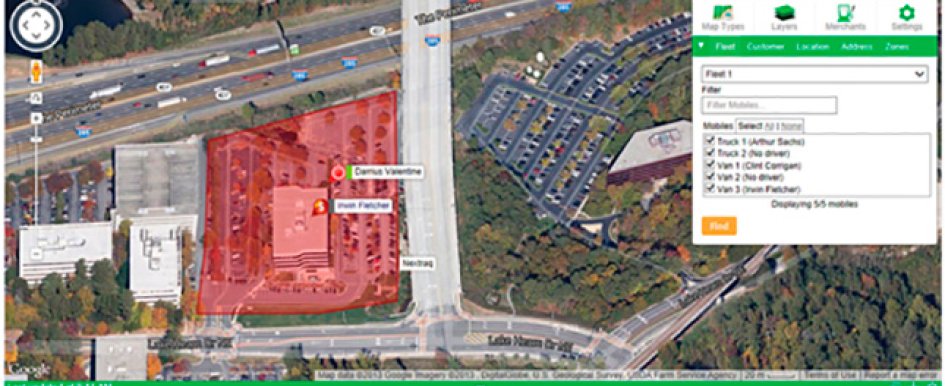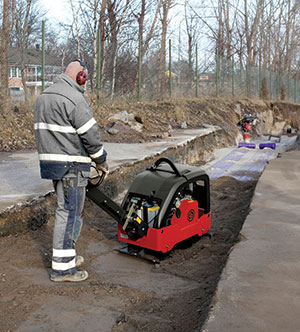
Anyone involved in the road building process knows it is not an easy job, and it isn’t something to be left for novices. It takes patience, experience and a great amount of knowledge. Getting the job done right the first time is paramount, and it all starts with one of the most critical processes—compaction.
Why Soil Compaction?
Soil compaction is a process that increases the density of the soil. Before we lay asphalt or concrete, the soil is the base layer. Soil compaction increases load-bearing capacity and stability, prevents soil settlement and frost damage and reduces water seepage.
At one point or another, you have likely driven on a highway or interstate and noticed buckling or bulging. This is mainly a result of the base dirt being prepped incorrectly and being poorly compacted. It is critical to get this first step right.

Soil and Moisture
It is important to know what kind of soil you are dealing with, as different soil types feature various maximum densities and moisture levels. Cohesive (clay), granular (sand) and organic (for planting) are the three basic soil groups, but only two of these—cohesive and granular—are suitable for compaction. Cohesive soils have particles that stick together, while granular soils crumble easily. Each soil type has unique characteristics, from absorbency to compaction difficulty.
The moisture content in the soil also must be considered before starting to do compaction work. There is a happy medium in terms of soil moisture—too much moisture weakens stability, but too little moisture will result in poor compaction. A quick and simple hand test will show the operator what they’re working with. Pick up a handful of soil and squeeze it in your hand, then open your hand and drop the soil. The ideal moisture will help the soil mold when you squeeze it, but allow it to break into a few pieces when you drop it (not too many pieces however). A dry soil will come out powdery and break into fragments when it’s dropped. On the other hand, if the soil leaves moisture in your hand and the mold of the soil remains intact when you drop it, it has too much moisture to be compacted. The right amount of moisture is not only important for the foundation but also will end up trimming down the amount of compaction work necessary to get the best results.
Equipment
Poor compaction can result in settlement of the soil. This creates future maintenance issues or, in extreme cases, causes complete structural failure such as cracking, buckling or bulging.
Different types of compaction equipment are available—rammers, forward/reversible plates, walk-behind rollers, ride-on rollers and trench rollers. Rammers and trench rollers are best utilized on cohesive soils, while forward/reversible plates, walk-behind rollers and ride-on rollers are better suited for granular soils.
In dealing with small compaction equipment, users need to be aware that it weighs, in some instances, about one-fifth of the compaction force it is putting out. For example, in an 11-foot by 11-foot area, a 185-pound rammer is outputting nearly 3,000 pounds of force. With all of this going on, a good maintenance program is critical to keep equipment in top performance mode.
Whether compaction equipment is part of your fleet or you rent it on an as-needed basis, it is important to have a service interval plan in place. Make sure the rental shop has a regular maintenance schedule or, if you purchased equipment, that you have a reliable, trained and certified technician servicing the equipment at least annually. Compaction is the first step to road building, so the last thing you want is a reduction in time and productivity because the equipment is acting up.
Biggest Compaction Mistakes
Compaction mistakes are common, even for the most experienced road-building contractor. It is important to take your time through this step and do not rush, or it will cause problems. The biggest mistakes typically seen on the job are overcompaction and undercompaction.
Overcompaction can occur if the operator makes too many passes in one direction with the compaction machine, which can reduce the soil density. Undercompaction results when the operator does not make enough passes with the compactor, so the particles in the soil are too soft and don’t get the cohesion they need to create the right amount of density.
Another important tip is to get the right amount of lift or depth of the soil layer. When filling a trench, it is important to place the correct amount of dirt and provide the right amount of compaction force to the area. As the soil becomes compacted, the impact travels less and returns more energy to the machine, making it come off the ground higher. An incorrect lift—one that has too much dirt and too much depth—will create a loose layer of dirt, resulting in undercompaction.
There are many steps and considerations involved in compaction work. The most important is regular equipment service. Compaction products work hard and hit the ground with much greater force than their static weight. Soil has a way of being unforgiving, and while compaction can be a long process, it is important to take the time to do it right.
